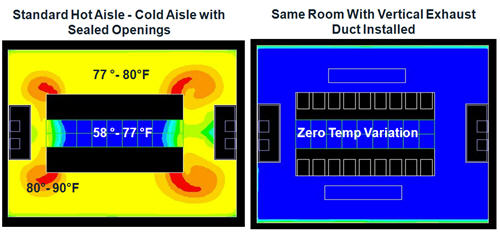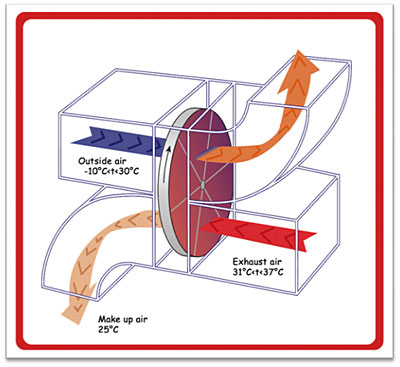It seems to be pretty much impossible to browse data center websites or magazines without being inundated with the challenges of data center cooling and the myriad of solutions being touted. If a data center professional made a serious effort to be well-read on all the topics, I think the data center itself would suffer from lack of attention. Personally I prefer the most simple and effective approach to just about anything I do. If I’m able to employ these two criteria, then not only is my day more productive, but the end result will meet my satisfaction.
CPI’s approach to data center cooling is simple and effective. I know, I’m adding to the noise by saying so, but the claim is worth investigating if you want a solution that is capable of taking your existing cooling capabilities and making it go farther – so far that you will use less cooling and power to get the same (or better) results.
The way we do it is simple. Our line of ducted equipment cabinets completely separates hot exhaust air from the cool air in the room. CPI pioneered the “chimney” cabinet which uses a duct to funnel hot air into the drop ceiling where it can be returned to the cooling unit. No more hot spots. No more recirculation. This concept, called CPI Passive Cooling® Solutions, has been tested and proven. If you have not had the opportunity to see how Intel incorporated CPI’s ducted cabinets, watch the video.

Let’s take it one step farther and talk for a minute about KyotoCooling® – a cooling system that uses a rotary wheel type of condenser to cool data center air without using a compressor. A recent article written by Rakesh Dogra on the Data Center Journal Website concluded that KyotoCooling seems to be the best possible answer to data center cooling thus far. What does this have to do with CPI Passive Cooling? Both solutions work hand-in-hand. Dogra explains the Kyoto concept like this, “The solution works in such a way that the cold air which is used to cool the hot air inside the data center does not actually mix with it … there are two circuits of air which are physically separated …”.

Even though CPI Passive Cooling does not rely on rotary wheel cooling, the end result is so effective that CPI is a regular presenter at KyotoCooling Seminars. The next series of seminars will be held December 1-2 and 3-4 in the Netherlands. Ian Seaton, CPI’s Technology Marketing Manager, will speak on “Maximum Cooling Efficiency with Hot and Cold Air Isolation at KyotoCooling: the Cooling Problem Solved”.
If the Netherlands is too much of a commitment, or if you have a question, contact us for more information by leaving a comment below or emailing [email protected]. Kim Ream, eMarketing Designer